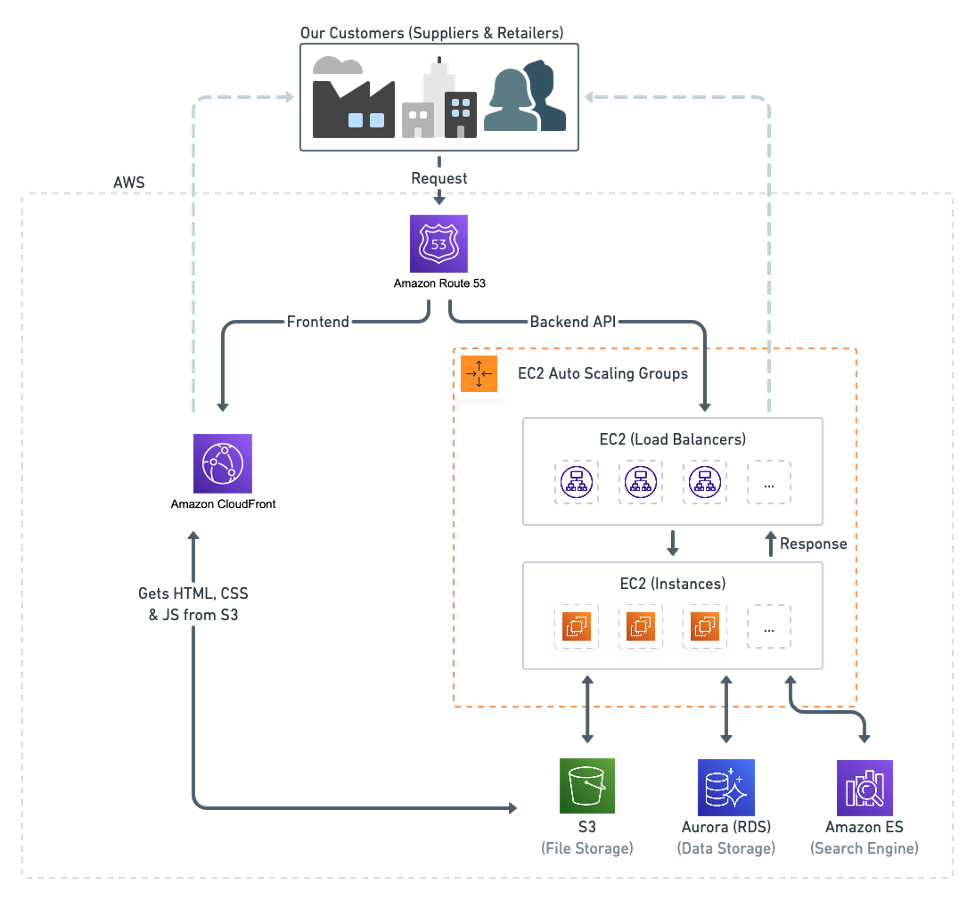Share this
Simplifying Retailer and Supplier Communication with Surefront
by Surefront on Dec 27, 2023 11:26:41 PM
Home > Blog > Simplifying Retail and Supplier Communication with Surefront
Table of Contents

For decades, retailers and their suppliers have communicated via email with spreadsheets, PDFs and other documents as attachments in those emails. From the advent of the internet and email communications, this was the fastest, most effective way for retailers and suppliers to send each other product data, financial information and other documentation to negotiate and complete business initiatives. Though this technology was sufficient for the 90s and early 2000s, new technology and supply chain demands have outgrown simple email communications.
In the last decade and a half, technology has improved the tools for data storage and management. From product information management (PIM) to product data management (PDM) programs, software innovations have provided companies with more options for organizing their product data. Other collaboration tools like product lifecycle management (PLM) software have helped teams move into the future of product development. Yet, the problem remains that without a centralized system for both product data and communications, companies are subject to data silos with important information living in at-risk locations with individual teams, or worse, with individual team members.
Surefront was designed to solve this problem and unify all tools needed for merchandising, product development, and sales. Officially termed a “unified collaboration management” platform, the cloud-based SaaS solution combines people, product data, and communications in a single space. This ensures maximum engagement throughout the entire value chain by allowing users to manage product data, track merchandising and development workflows, send and receive quotations with 3rd-party partners, and execute sales orders without ever leaving the platform.

Founded in 2016, Surefront aims to streamline the core functions of product development, merchandising, and wholesale operations to help companies bring products to market faster and more efficiently. By unifying stakeholders with a central repository for product data and financial information with built-in communication tools, the platform naturally breaks down data silos and promotes immersive collaboration regardless of users’ physical location. Such complexity in creating a platform with multi-entity, multi-hierarchy collaboration presented significant challenges to Surefront’s development team, which they were able to overcome with the help of AWS.
The Challenges
From the very beginning, the engineering team at Surefront knew that creating an ambitious product at this scale was going to require a wide variety of modern technologies and systems. If customers were going to be convinced to switch away from traditional email and Excel exchanges, the replacement was going to have to be well-designed, reliable, and convenient. Customers would expect to be able to use familiar concepts like quotes and orders, product management, and task workflows; they would also need the ability to import their product inventory into the platform with familiar columns and rows. Unifying those various systems under one platform would require some serious infrastructure and engineering resources to maintain.
That infrastructure would also have to be scalable. After the initial onboarding, customers invite their retailers, suppliers and peers to join them and collaborate within the platform. Which means that for each customer onboarded, a significant number of referred customers would then also begin to make use of the platform.
In addition to scale, customers also expect to be able to quickly run searches and apply filters to both their own inventory and the inventories of their suppliers. Achieving this would require a robust search engine and filtering solution that would be customizable and performant.
The Solutions
Bearing those goals in mind, the first challenge to solve was how to host and scale the two primary areas of the platform: the backend and frontend frameworks. For the backend, the team decided to leverage Amazon EC2 autoscaling groups. Autoscaling groups allow the team to create clusters of EC2 instances that work in parallel to handle incoming requests. This allows the team to scale up the platform to meet demand as customers and their suppliers invite and onboard each other into Surefront. On the frontend side, the team chose to go with a combination of Amazon S3 for asset management and Amazon Cloudfront for efficient distribution across the global content delivery network. This allows the frontend of the platform to be reliably available and quick to load across all of Surefront’s targeted geographical regions.
Like any startup that aspires to build the trust and confidence of its users, reliable, scalable and secure data storage is critical. To that end, the team agreed that Amazon Aurora is the database of choice since it provides enterprise level PostgreSQL workloads of up to 64 TB and up to 15 read replicas on each cross-region cluster. Security-wise, the team maintains regularly-scheduled automatic snapshots of each database to ensure the platform’s vast reserves of data remain safe and fault tolerant.
When it comes to searching through large volumes of data, few solutions in the tech industry are as well known and respected as Amazon OpenSearch Service (successor to Amazon Elasticsearch Service). That’s why the team decided to leverage AWS’s hosted version of Amazon OpenSearch Service to power Surefront’s Smart Catalog. Amazon OpenSearch Service allows the team to utilize resizable clusters of search nodes to ensure that searching is fast and accurate across the various brands, colors, sizes and other custom data points that customers upload into their catalogs. It also allows the frontend team to build smart filters that can be combined to narrow search results and identify the products that customers are looking for.

Moving beyond these initial solutions and into the future, the team at Surefront plans to explore integrating other AWS services like Amazon ECS and AWS Lamba Step Functions into the platform to expand the scope of what can be offered to customers. Services like ECS could allow Surefront’s developers to experiment more quickly, building out and deploying modular features that can be quickly iterated upon. While services like Step Functions could be used to build out structured processes like chatbots, customizable PDF exports, and line sheets.
The future looks bright
With the recent shortages in supply chains worldwide and the massively increased demand for shipped goods, the future of trade and communications between retailers and manufacturers is primed to be innovated upon. Businesses cannot afford to fall behind, relying on decades-old technologies like email and Excel that provide little context and require constant follow-ups by the employees who use them. There are better technologies and systems available, and Surefront is eager to introduce them to any B2B vendor that wants to sign up and start collaborating with their partners.
“We’re super excited to be in this position, where we are able to provide businesses and enterprises with a solid platform for buying, selling, and communicating. This is a new age for digital supply chains and ecommerce,” says Bucky Roberts, Head of Engineering.